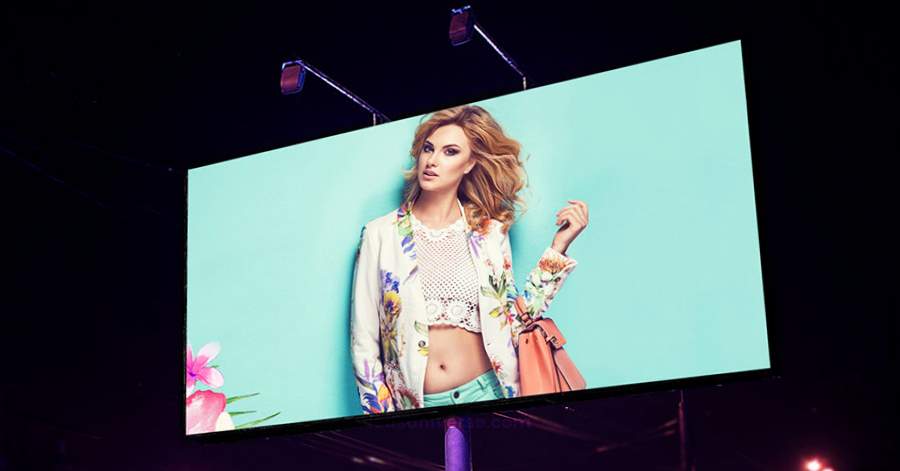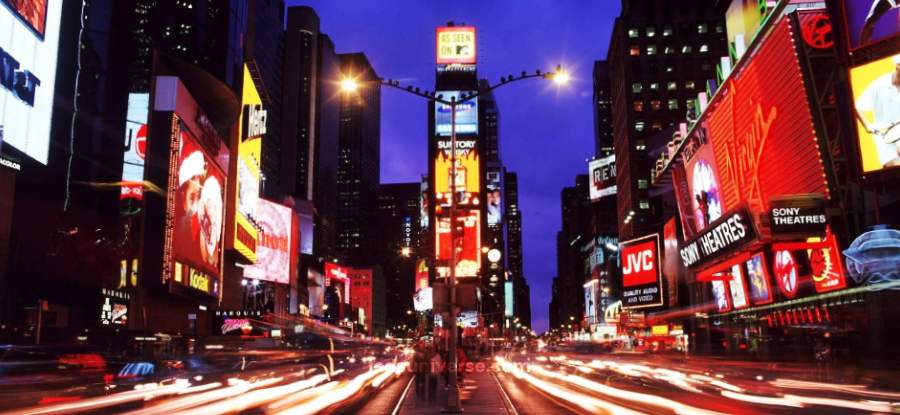In the ever-evolving world of outdoor advertising, the impact of a billboard is only as strong as its visibility. As night falls and urban landscapes transform, the power of effective billboard lighting becomes paramount.
Effective billboard lighting not only enhances visibility and readability but also contributes to the overall aesthetic appeal of the advertisement. Various aspects of billboard lighting are explored, including types of lighting, power requirements, light pollution concerns, and best practices for maintaining optimal illumination.
Reach out for free lighting consultation
Table of Contents
ToggleTraditional methods of billboard lighting typically involve the use of floodlights and spotlights. Floodlights are designed to provide broad, even illumination across the entire billboard surface. These lights are often mounted on poles or structures positioned at a distance from the billboard, making them suitable for large-scale advertisements that require extensive coverage. Spotlights, on the other hand, are used to focus light on specific areas of the billboard, allowing for targeted illumination. This flexibility is particularly useful for highlighting certain parts of an advertisement to make them stand out more prominently.

LED technology has revolutionized billboard lighting in recent years due to its energy efficiency and adaptability. LEDs offer several advantages over traditional lighting options. They consume significantly less power, resulting in lower energy costs and reduced environmental impact. LEDs also have a longer lifespan, reducing the frequency of replacements and maintenance. Their ability to provide bright, clear illumination makes them ideal for dynamic advertisements that require frequent changes. Furthermore, LED lights offer precise control over brightness and color temperature, allowing for greater flexibility in creating eye-catching displays.
Although less common in modern applications, neon lighting remains a distinctive option for some billboards. Neon signs are known for their bright and colorful glow, which can be highly effective for creating visually striking advertisements. Neon lighting works by passing an electric current through neon gas contained in glass tubes, resulting in a vibrant light emission. However, neon lights are less energy-efficient compared to LEDs and require more maintenance. As a result, they are generally being replaced by more durable and energy-efficient lighting solutions.
The power consumption of billboard lighting is a critical factor to consider, especially when evaluating long-term operational costs. Traditional lighting sources, such as incandescent and halogen bulbs, consume more energy compared to LED lights. This higher energy consumption results in increased electricity bills and a larger carbon footprint. In contrast, LED lighting is significantly more power-efficient. LEDs use a fraction of the energy required by traditional lighting sources while delivering the same or even greater levels of illumination. This efficiency not only reduces operating costs but also contributes to a more sustainable lighting solution.
Brightness in billboard lighting is quantified in lux, a measure of the light intensity reaching a specific area. For effective advertising, achieving the correct lux level is crucial to ensure that the billboard content remains clear and readable from various distances. Typically, the required lux level for billboard lighting ranges from 300 to 600 lux, depending on factors such as the billboard’s placement, ambient lighting conditions, and the design of the advertisement itself. For instance, billboards in high-traffic zones or areas with low ambient lighting may need lux levels closer to 600 to maintain visibility. LED lights are particularly advantageous in this context, as they allow for precise brightness adjustments, ensuring optimal illumination under different environmental conditions.

Light pollution is a growing concern in urban areas, where excessive or misdirected artificial lighting can disrupt ecosystems and negatively affect human health. Billboards, due to their size and brightness, can contribute to light pollution if not managed properly. To mitigate the impact of light pollution, it is essential to use lighting fixtures designed to minimize glare and direct light where it is needed. Shielded fixtures and proper alignment can help reduce light spill into unintended areas. Additionally, utilizing dimmable LED lights allows for adjustments based on time of day and ambient light conditions, further reducing light pollution.
Many cities and municipalities have regulations in place to address light pollution and ensure that outdoor advertising does not negatively impact the surrounding environment. Billboard operators must adhere to these regulations, which may include limits on brightness, lighting hours, and the use of shielding to control light spill. Compliance with local guidelines is crucial for avoiding fines and legal issues. By working with lighting professionals to ensure that billboard lighting systems meet all regulatory requirements, operators can contribute to a more sustainable and visually harmonious environment.
Effectively illuminating billboards involves careful consideration of beam angles and lighting arrangements. LedsUniverse has developed innovative solutions to address these needs. Their 80W billboard lights and other lighting options are designed to distribute light evenly across billboard surfaces. The outdoor LED billboard light features a three-row design. The upper row’s LED lights have a narrower beam angle to illuminate the top of the billboard, which is farther from the light source. Conversely, the lower row has a wider beam angle that spreads light more evenly across the bottom of the billboard.
The LED billboard lights are engineered to deliver optimal performance with several distinctive features. The upper light row is bent to improve coverage at the bottom of the billboard, ensuring more uniform illumination across the entire surface. The lights have a luminous efficiency of 130 lumens per watt, providing high brightness while maintaining energy efficiency. Premium lenses with precise optical calculations ensure focused and efficient light distribution.
The unique upper-inclined structure of the lights helps maintain excellent uniformity and coverage, especially in high-power scenarios. The 80W billboard light’s three-row configuration is slightly tilted to enhance illumination at the billboard’s bottom. Different light rows have varying angles to maximize coverage and uniformity. With a luminous efficiency of 140 lumens per watt, high-quality lenses focus the light beam for effective advertising visibility.
The billboard lights are designed to offer superior performance and durability. The lights feature a highly advanced chip and optical lens system that delivers lumen levels twice as strong as standard LED sets. The open design includes small, equidistant crevices that reduce wind pressure and improve LED resistance, leading to a slimmer and more durable body.
The modular design allows for individual lamp replacement rather than removing an entire lamp section, making installation and maintenance easier. An improved heat dissipating system ensures efficient cooling, with heat channeled to the heat sink to keep the lamp’s front side cooler than other LED lights. The use of top-tier materials, such as aluminum and stainless steel, ensures longevity and reliability. The lights are tested to withstand temperatures ranging from -40 to 45 degrees Celsius, providing a long life span and excellent performance in extreme conditions.
Additionally, the anti-glare system allows for direct visibility without causing discomfort or dazzling. The billboard lights hold certifications from ETL, TUV, CE, and RoHS, confirming their quality and compliance with industry standards.
The LED billboard lights are available with luminous efficiencies of 150 lumens per watt and power options ranging from 80W to 300W. Designed for outdoor use, these lights feature an IP66 certification, with IP67 and IP68 models also available. They operate effectively within a temperature range of -40 to 50 degrees Celsius. With a lifespan of approximately 100,000 hours and a 5-year warranty, Our LED billboard lights offer high quality and competitive performance.
LED billboard lighting presents numerous advantages over traditional lighting methods. One of the most significant benefits is energy efficiency. LED lights consume up to 80% less energy than conventional halogen or metal halide bulbs while delivering the same, if not better, levels of brightness. This reduced energy consumption translates to lower electricity bills and a decreased environmental footprint. Additionally, LEDs have a longer operational life, often exceeding 50,000 hours, which reduces the frequency of replacements and maintenance. This longevity not only contributes to lower maintenance costs but also minimizes waste, making LED lighting a more sustainable choice.
Another advantage of LED billboard lighting is its flexibility and customization options. Modern LED systems allow for precise control over brightness and color temperature, enabling billboard operators to tailor the lighting to specific advertising needs. For instance, LEDs can be adjusted to provide cooler or warmer light depending on the time of day or the nature of the advertisement. This ability to customize lighting enhances the visual appeal of the billboard and ensures that advertisements remain effective under various conditions. Moreover, LED lights can be programmed to create dynamic effects, such as color changes or dimming, which can be used to capture attention and engage viewers.
Effective maintenance is crucial for ensuring the continued performance and longevity of billboard lighting systems. LEDs are known for their durability and low maintenance requirements compared to traditional lighting options. Unlike incandescent or metal halide bulbs, which have filaments that can break or degrade over time, LEDs use solid-state technology that is more resistant to shock and vibration. This robustness makes LEDs particularly suitable for outdoor environments where exposure to weather and physical impacts can occur. Furthermore, the modular design of the billboard lights simplifies maintenance by allowing for individual lamp replacements rather than the entire fixture. This design feature reduces downtime and operational disruptions, ensuring that billboards remain well-lit and effective.
By understanding the different types of lighting, power requirements, and environmental considerations, operators can make informed decisions to improve visibility and reduce light pollution. The advanced lighting solutions exemplify the benefits of modern LED technology, offering superior brightness, energy efficiency, and durability. Their innovative designs and high-quality components ensure that billboards not only capture attention but also contribute to a more sustainable and visually appealing environment.